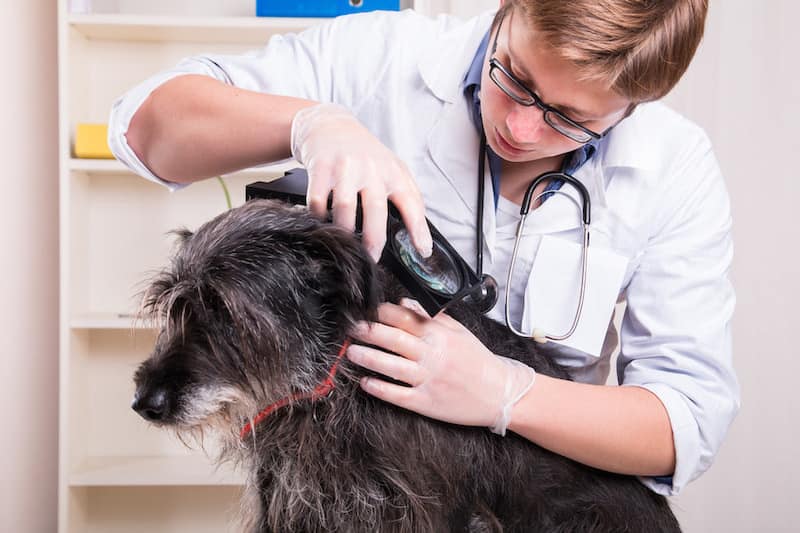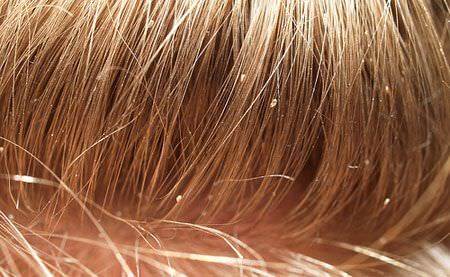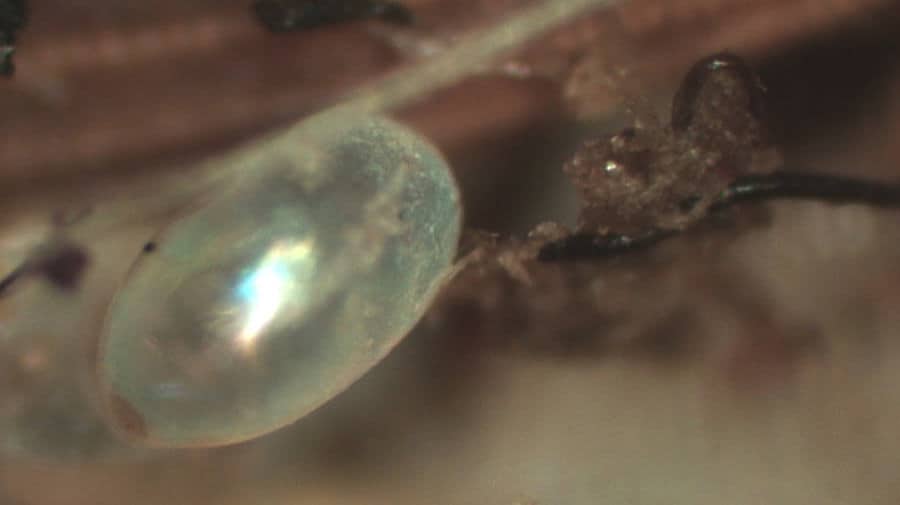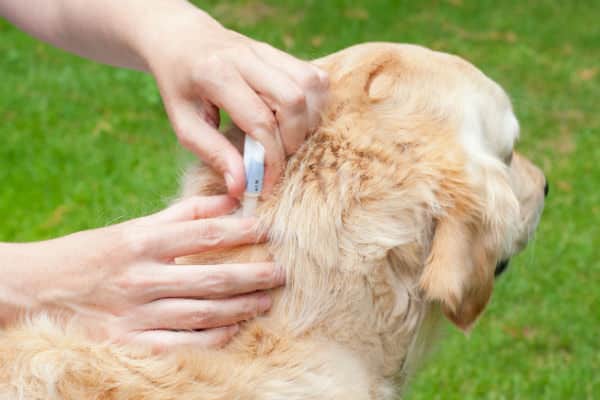What Do Flea Bites Look Like?
A flea’s diet consists solely of warm blood. This means that any warm-blooded creature is vulnerable to being bitten by a flea. Regardless of whether your dog or cat has got fleas or not, they are still at risk of catching them from outside environments. Fleas like to live in long grass, shaded areas, in log piles, or in storage areas, like a shed or garage.
Once fleas have gained access into your home, it is easy for their population to flourish, if appropriate measures are not taken to expel them. Fleas are excellent breeders and can easily multiply in various areas of your house, making you and your pets more at risk of being bitten.
Fleas are known to carry different illnesses and diseases. While the risk of humans contracting these diseases is very small, your dogs and cats are more likely to be exposed to such illnesses if they are bitten by an infected flea. They also have the potential to experience significant harm when having ingested a flea by self-grooming.
That said, knowing how to identify a flea bite can be the first indicator that you have a problem with fleas. As these creatures are so minuscule, you may not be able to determine their presence just by spotting them around the house. Therefore, being able to diagnose what a flea bite looks like is essential to keeping your household free of fleas and to keep your pets protected.
What Do Flea Bites Look Like on Humans?
Flea bites on humans are arguably the easiest to spot as we do not have a thick layer of fur protecting our skin. They are small and round, and will be red with some slight inflammation, very similar to a mosquito bite.
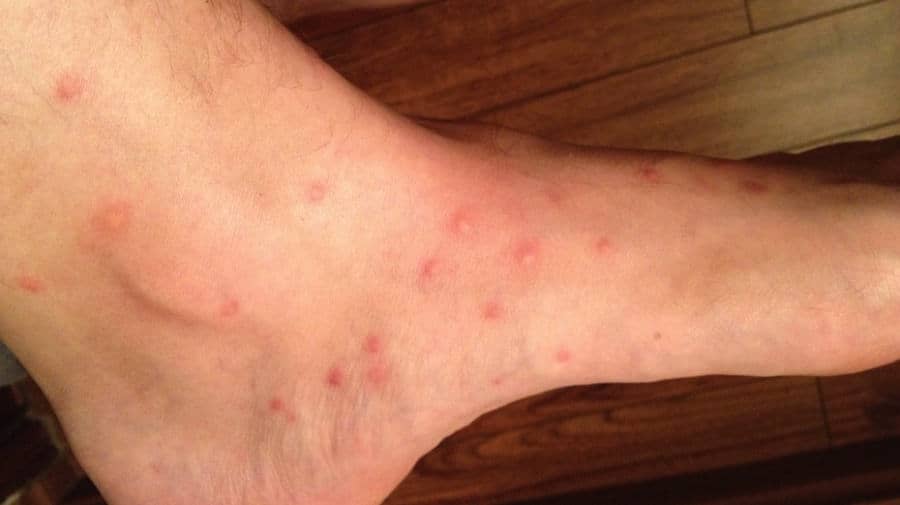
Flea bites typically appear in small groups on humans. It is very rare to find one flea bite on its own. If there are around three to four bites in the same area, it is likely that a flea has caused these bites.
It is also more common for fleas to bite humans around the ankles and legs, especially during their first biting spree. If a number of small red bites appear around your ankles and lower leg, a flea could be the culprit.
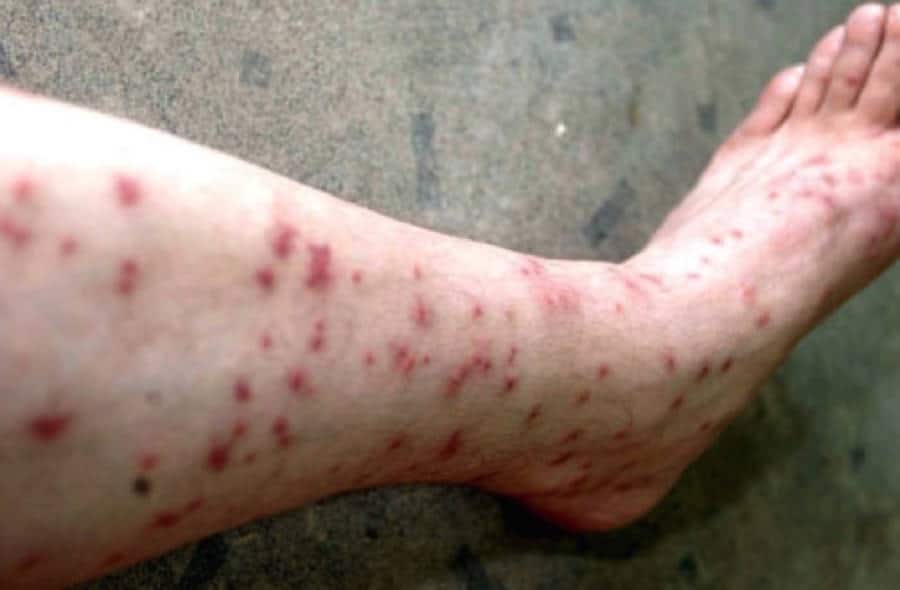
A flea bite can also be identified by how the bite feels. Like many other kinds of insect bites, flea bites are incredibly itchy and cause irritation. It is possible that the skin around the flea bites will become inflamed, and in some cases develop into a rash.
This may be due to an allergic reaction from the flea’s saliva. While it is feasible for some people to have an allergic reaction to flea bites, it is unlikely that this allergy will have a serious impact on your health.
It is incredibly important to avoid scratching flea bites as if the skin is broken around the bite, you are at a higher risk of developing a bacterial infection. It will also take longer for the bite to heal. Some signs that a flea bite has become infected are a rash developing or blistering of the bites.
What Do Flea Bites Look Like on Dogs?
Although it is possible for fleas to bite humans, they much prefer biting cats or dogs. Just like when a flea bites a human, a flea bite on a dog resembles a small red spot. These bites can also become more inflamed when scratched. If your dog is scratching or licking at their skin, these are clear signs of some kind of irritation.
As it can be more difficult to identify a flea bite on a dog due to their thick layer of fur, there are alternative ways to detect if your dog has been bitten. If your dog is scratching constantly, almost obsessively, they may be suffering from a flea infestation. If they have lost some fur or if their skin looks red and irritated, these are also indicators that your dog may have been bitten by fleas.
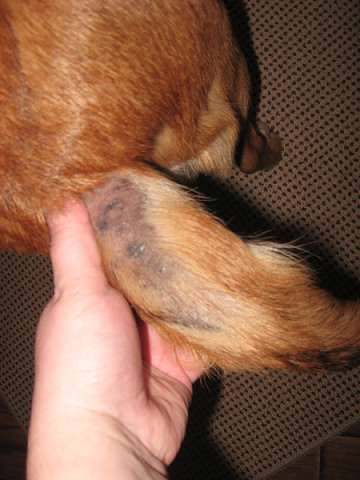
To prevent your pet from experiencing such discomfort, it is important to be able to recognize whether your dog has a flea problem. Relying purely on the appearance of bites for confirmation of this could prove challenging. Therefore, the best way to identify fleas is to search for them.
Fleas like to live in areas such as the neck and ears, as well as the abdomen, on dogs. Check these areas thoroughly. While fleas are extremely small, at around one to three millimeters in length, they are quite easy to identify on your dog as they are very mobile and active creatures.
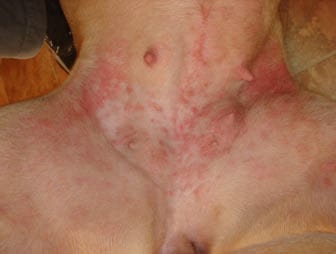
If you fail to spot the jumping insects directly on your dog’s body, you can hunt for flea excrement, also known as flea dirt. Flea droppings look like tiny specks of pepper and will be scattered all over the infested area of your dog’s body, so check the body parts mentioned above for flea feces.
Flea droppings are actually dried up bits of blood. A good way to verify if your dog has ‘flea dirt’ is to dampen a white cloth or kitchen towel and wipe it over your dog’s body. As the blood rehydrates it will turn from brown to red.
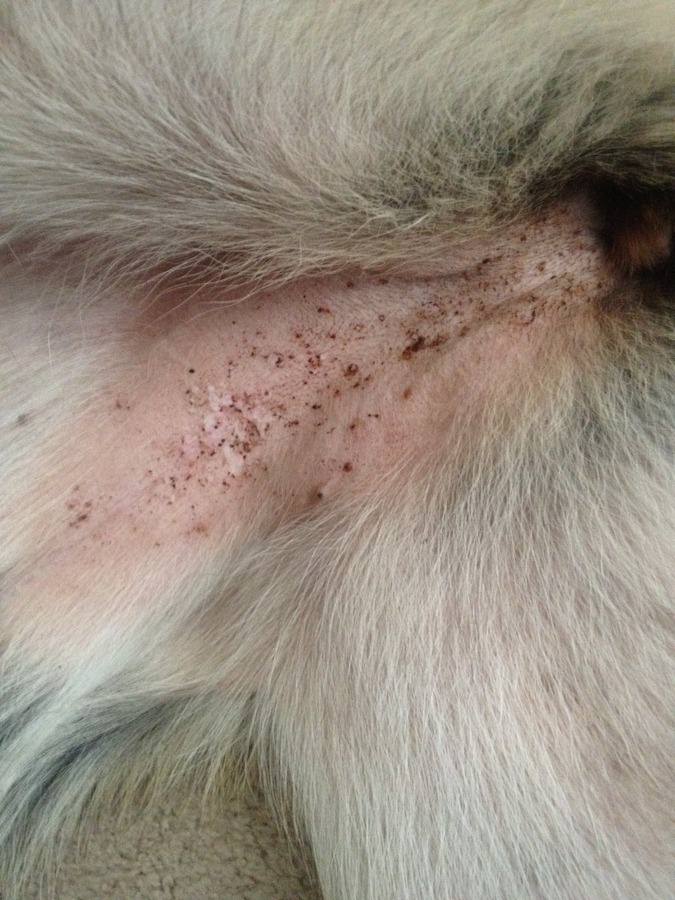
Just like humans can have an allergic reaction to flea saliva, dogs are also susceptible to allergic reactions from flea bites. In fact, dogs are more sensitive to certain elements in flea saliva and are much more likely to experience an allergic reaction to a flea bite than a human. If your dog is suffering from an allergic reaction to flea saliva, they can suffer from fur loss and scaly skin.
Flea bites on dogs are also much more likely to become infected as they are far less likely to withdraw from scratching themselves. Your dog can also develop skin infections as a result of a flea bite.
As fleas feed on blood, your dog may be at risk of developing anemia, due to the amount of blood loss. If your dog suddenly looks or acts weak and you suspect that he has fleas, or has had an allergic reaction caused by a flea bite, consult your veterinarian before applying any treatment to get rid of the fleas.
What Do Flea Bites Look Like on Cats?
As with humans and dogs, cats have sensitive skin and are likely to experience irritation from a flea bite. There are a number of ways to identify whether or not your cat is suffering from flea bites. Many of these ways are very similar to that of humans and dogs.
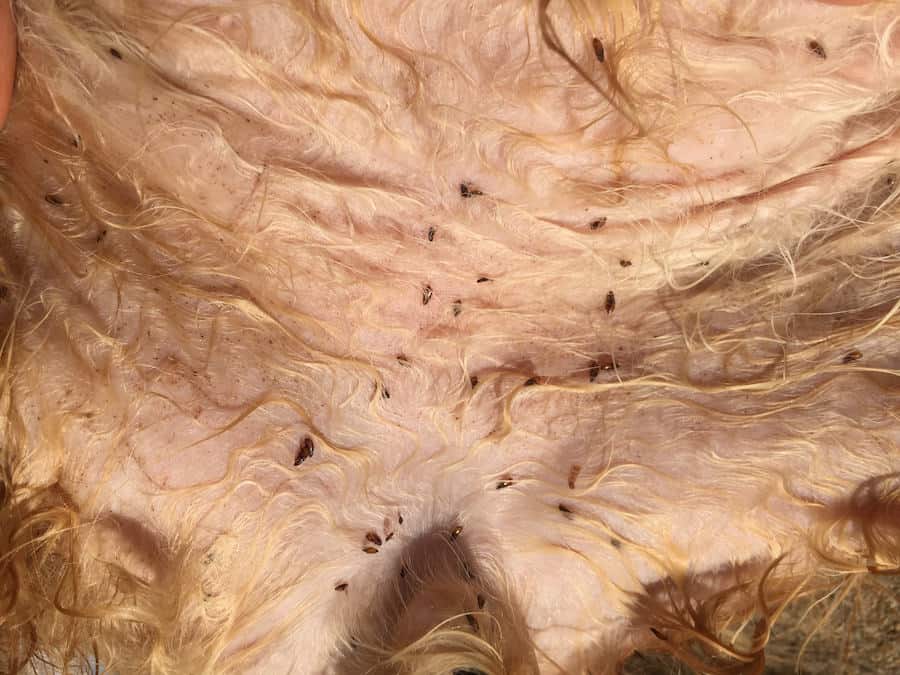
If your cat is incessantly itching or scratching at their skin, this can be the first clear indication that your cat has fleas. Check their skin for any irritation and you may be able to identify the flea bites themselves. They have the same appearance on cats as they do on dogs and humans: small, red and round. It is also extremely likely that the skin surrounding the bite will be inflamed.
Cats are also highly sensitive to flea saliva and are at risk of suffering an allergic reaction from a flea bite. While flea bites do cause irritation and will make your cat scratch at them, over-scratching can lead to the bites becoming infected.
Infected flea bites can develop into a number of different skin infections. It is important that you are able to identify if it is fleas causing the problem as quickly as possible, in order to commence treating your cat.
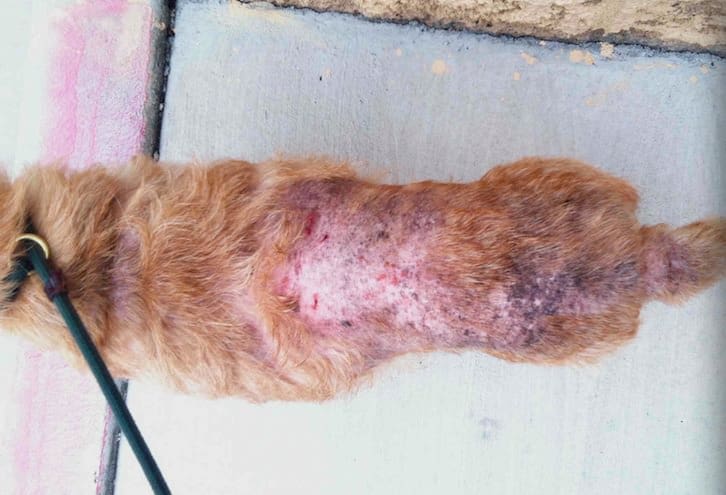
As with dogs, the best way to confirm whether or not your animal is suffering from flea bites is through visual identification of the flea. This can be done by checking different hotspots on your cat where fleas tend to thrive. Check the areas around the neck and tummy to see if you can identify these tiny brown creatures.
If you are struggling to identify the fleas in these areas, a flea comb can be very helpful. A flea comb is an extremely fine-toothed comb that can pull fleas or their larvae away from your cat’s fur. Once you have positively identified that it is fleas causing your cat discomfort, you can begin treatment.
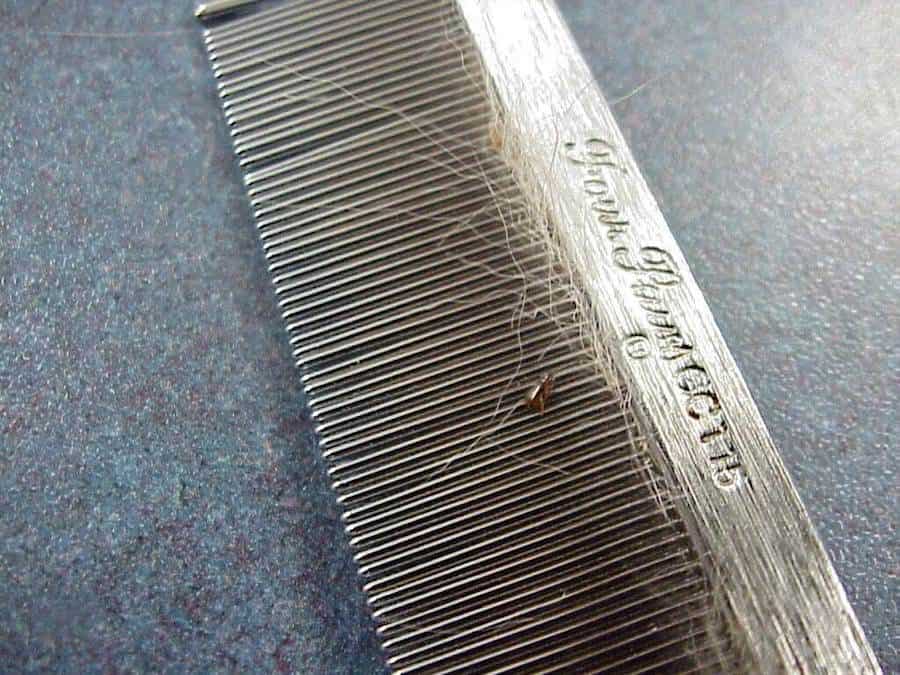
Be sure to consult with your veterinarian before treating your cat for fleas. Your vet will be able to check if the cat has suffered an allergic reaction from the flea bites and prescribe an appropriate treatment for any skin infections. Additionally, it is worth mentioning that not all flea treatments are safe for cats. Some flea treatments have highly potent ingredients in them and others may be toxic for cats. Your vet will be able to advise a safe and effective solution.
Summary
Fleas are blood-sucking creatures that can cause really big problems if they are not dealt with quickly. They are happy to bite any warm-blooded animal they can find: humans, cats, and dogs included.
The way to identify a flea bite on humans, dogs and cats is simple and easy. All flea bites have the same visual appearance; small, round, and red. Flea bites cause irritation and itchiness and this is a clear way of establishing that the bite was caused by a flea.
It can be much easier to spot flea bites on humans than on dogs and cats. On a human, flea bites will have a red ring around them and tend to be in groups of 3 or 4. The common location of flea bites in humans is around the feet and legs. Flea traps can also be made and set up to identify the culprits.

A flea bite on a dog has the same appearance as a flea bite on a human. They are not as easy to see though, due to the dog’s coat of fur. On the skin, the bite will be red and round, and the surrounding skin will typically be inflamed. In order to confirm it is a flea bite, check for fleas on the dog’s body. Fleas tend to live around the tummy and neck on dogs, hence why dog flea collars can be an effective treatment choice.
A flea bite on a cat has the same appearance as a flea bite on a dog. Just like with dogs, a cat’s fur coat makes it more difficult to see them with the naked eye. When taking a closer look at a cat’s skin through the fur, the bite will be round and red. Typically, due to the irritation caused by a flea bite, the surrounding skin will be inflamed, similar to humans and dogs.
In order to positively identify a flea bite on a cat, fleas should be present on the cat’s body. Much the same as dogs, check the areas around the neck and the tummy of the cat. A flea comb can be used to help to identify the presence of fleas on your cat or dog. Similarly to dogs, cat flea collars can be effective treatment methods.
If you suspect that either yourself, your dog or your cat has been bitten by a flea, it is important to make sure you consider some sort of treatment or repellent against fleas. Fleas tend to breed very quickly. If your home becomes infested with fleas, you will obviously be more exposed to bites.
It is also extremely important to monitor your dog or cat for any allergic reaction they may have to a flea bite. Flea bites on humans, dogs and cats can very easily become infected and cause skin infections. Therefore, it is highly important to keep a close eye on any bites and ensure that you are not only treating the bites, but also trying to solve the flea problem itself. You should be especially proactive if you discover clusters of flea bites on children and babies.
Finally, be careful when selecting a flea treatment as some contain highly toxic ingredients that can harm you and your pets. Make sure that you consult your veterinarian about any treatment you would like to use on your animal and around your home.


